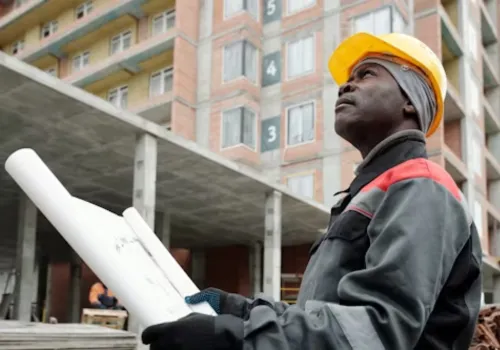
After a promising start to the year, nonresidential construction planning lost momentum in March, weighed down by market uncertainty and fears over new tariffs, according to the latest report from Dodge Construction Network.
The Dodge Momentum Index (DMI) — a benchmark measuring the earliest stages of nonresidential construction planning — fell 6.9% in March, reversing the upward trend seen in January and February. Dodge attributed the pullback to widespread hesitation among developers, particularly amid concerns about how upcoming tariff policies might impact materials pricing and project budgets.

“Increased uncertainty around material prices and fiscal policies may have begun to factor into planning decisions throughout March,” said Sarah Martin, associate director of forecasting at Dodge Construction Network. “While planning data has weakened across most nonresidential sectors this month, activity remains considerably higher than year-ago levels and still suggests steady construction activity in mid-2026.”
The report highlights a 7.8% drop in commercial planning, with slowed activity in warehouses, retail, and — most notably — data centers, a sector that has driven a significant portion of growth in recent months. Meanwhile, institutional planning, which includes healthcare, education, and life sciences projects, declined by 5%.
Martin pointed to the ripple effects of President Donald Trump’s April 2 tariff announcement, which introduced added unpredictability into construction supply chains and budgets. “Uncertainty around impacts from tariffs likely weighed on development decisions,” she said.
These new trade policies have rekindled long-standing concerns across the construction industry, especially regarding volatile materials costs and potential delays or cancellations of already fragile projects.
Despite the monthly dip, data centers continue to be a critical component of construction planning. Still, momentum is clearly decelerating. For instance, Microsoft — one of the world’s largest data center developers — recently announced it is pausing or slowing some early-stage projects, including a $1 billion build in Ohio, according to the Associated Press.
If materials prices surge further or supply chain issues worsen under the new tariffs, additional data center delays could follow. However, Dodge notes that data center planning remains at historically high levels, continuing to “significantly prop up overall planning figures” despite March's downturn.
To illustrate this influence, Dodge highlighted that commercial planning is up 32% year-over-year, and institutional planning is up 27%. But without data center projects, commercial planning would have risen only 4%, and the overall DMI just 12% from March 2024 levels.
Despite the slowdown, 25 projects valued at $100 million or more entered the planning phase in March — a strong signal that investor interest in large-scale development remains intact, even as economic pressures mount.
Major commercial projects include:
Notable institutional projects include:
While short-term planning may be showing signs of strain, Dodge’s data suggests developers are still looking ahead with moderate optimism. With activity levels far surpassing those of early 2024, the forecast for construction in mid-2026 remains on steady footing — though the sector’s near-term resilience may depend heavily on how tariff policies and material costs evolve in the coming months.
Let me know if you'd like this version tightened into a brief or tailored for a specific audience (e.g., general contractors, real estate developers, economic analysts).
Originally reported by Sebastian Obando in Construtcion Dive.